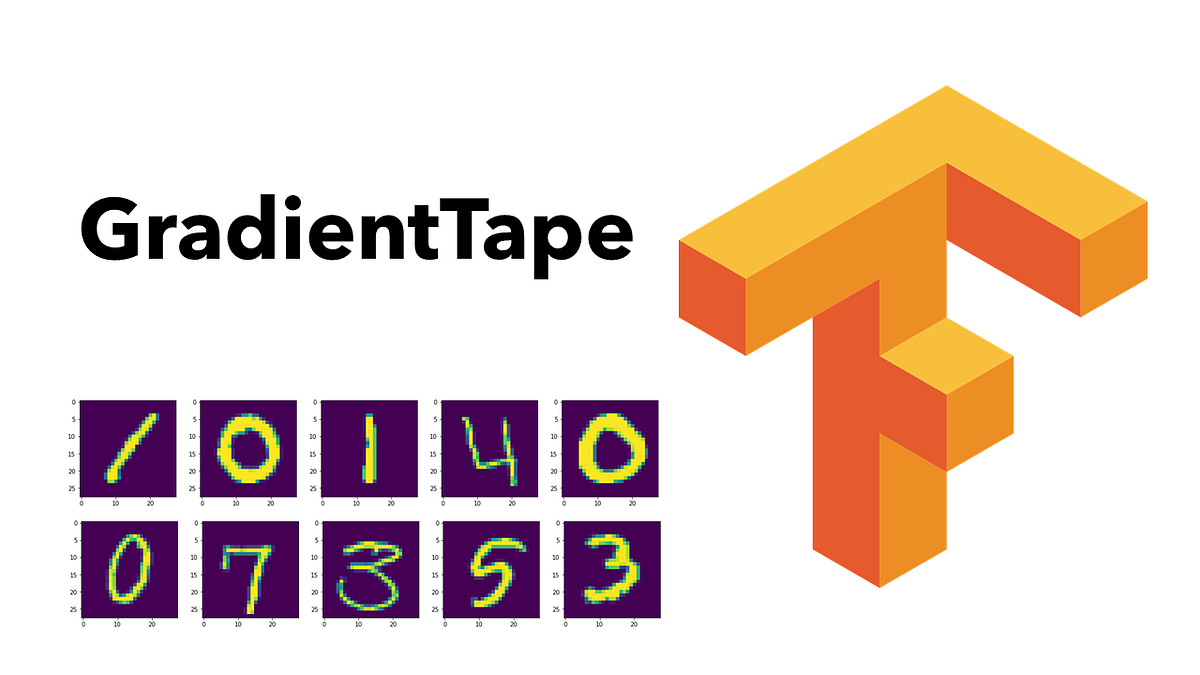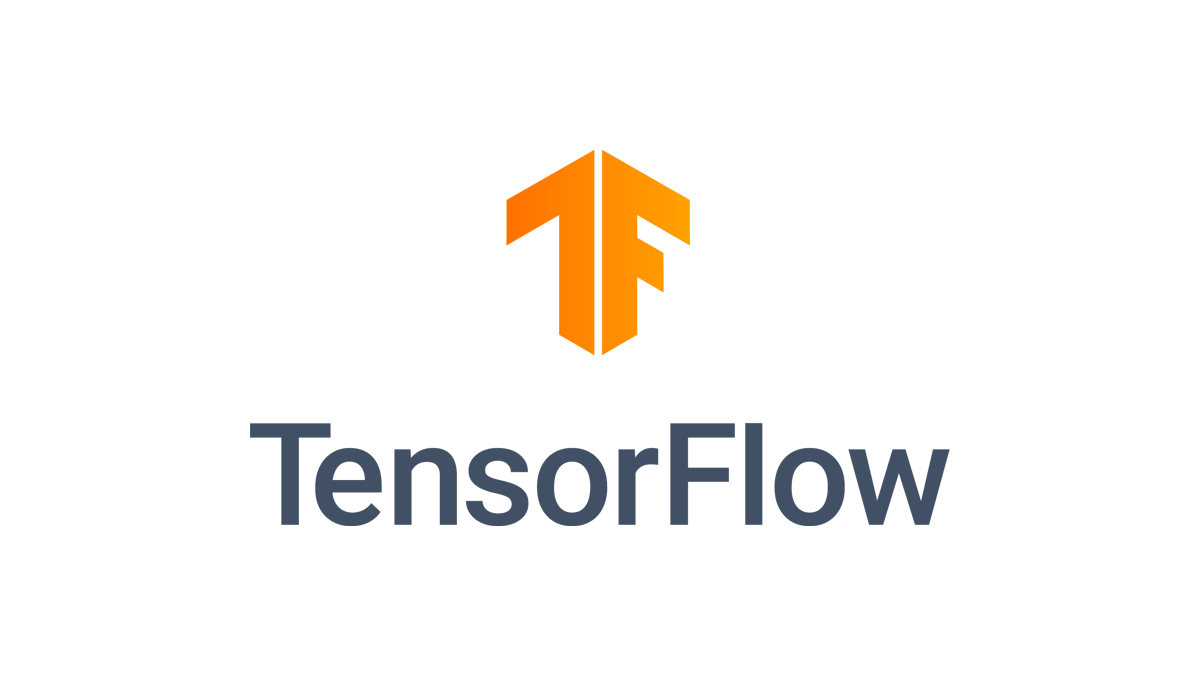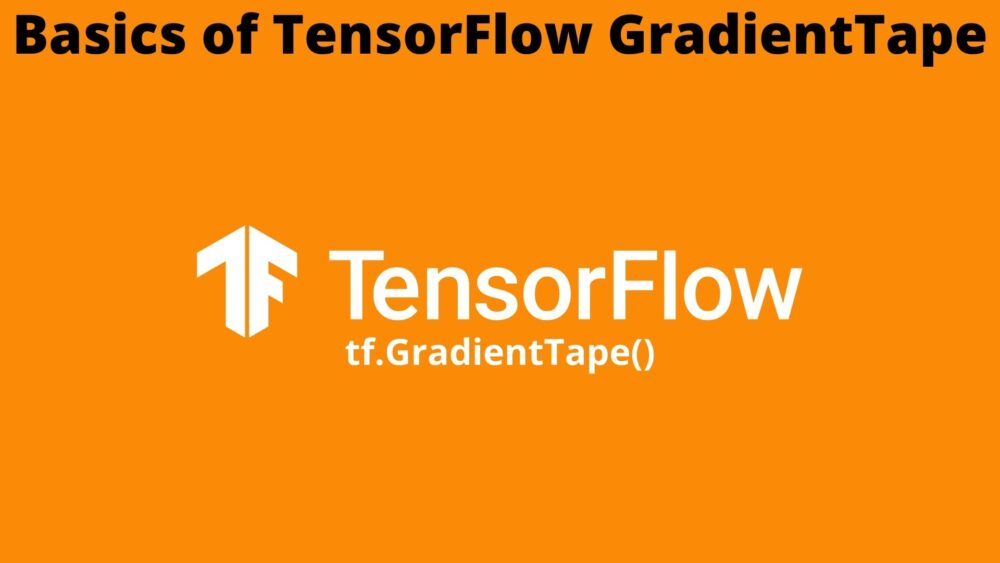Understanding TensorFlow Gradient Tape: Purpose and Uses
Learn how TensorFlow's Gradient Tape tracks operations for automatic differentiation, enabling efficient gradient-based optimization in machine learning models.
Learn how TensorFlow's Gradient Tape tracks operations for automatic differentiation, enabling efficient gradient-based optimization in machine learning models.
In the realm of TensorFlow, efficient gradient calculation is paramount for training machine learning models. This is where tf.GradientTape takes center stage. tf.GradientTape acts as a recorder, meticulously tracking operations performed on TensorFlow variables within its defined context. This recording is not merely for archival purposes; it empowers TensorFlow to automatically compute the gradients of a target tensor, such as your model's loss, with respect to any source tensors, typically your model's weights. This automatic differentiation is achieved through a reverse-mode approach, where TensorFlow retraces the recorded operations backward, calculating gradients step by step.
TensorFlow's tf.GradientTape is essential for calculating gradients, which are crucial for training machine learning models. Here's a breakdown:
What it does: tf.GradientTape records operations performed on TensorFlow variables within its context. Think of it like a recorder for your computations.
with tf.GradientTape() as tape:
# Your computations hereWhy it's important: This recording allows TensorFlow to automatically calculate the gradients of a target tensor (e.g., your model's loss) with respect to any source tensors (e.g., your model's weights).
loss = ... # Calculate your loss
gradients = tape.gradient(loss, model.trainable_variables)How it works: TensorFlow uses reverse-mode automatic differentiation. It traverses the recorded operations backward, computing gradients step-by-step.
Practical use: You use tf.GradientTape to:
optimizer = tf.keras.optimizers.Adam()
with tf.GradientTape() as tape:
predictions = model(x)
loss = loss_fn(y, predictions)
gradients = tape.gradient(loss, model.trainable_variables)
optimizer.apply_gradients(zip(gradients, model.trainable_variables))Key points:
tf.GradientTape only tracks operations on TensorFlow variables by default.tape.watch() to track other tensors.tape. You need a new tf.GradientTape context for each gradient calculation.This Python code demonstrates a simple linear regression model using TensorFlow. It defines a linear model, sample data, a loss function (Mean Squared Error), and an optimizer (Stochastic Gradient Descent). The code then iterates through a training loop, calculating the loss and gradients to update the model's parameters. The training progress is printed every 10 epochs. Finally, the learned parameters (weights and bias) are printed.
import tensorflow as tf
# Define a simple linear model
class LinearModel(tf.Module):
def __init__(self):
self.w = tf.Variable(2.0)
self.b = tf.Variable(1.0)
def __call__(self, x):
return self.w * x + self.b
# Create an instance of the model
model = LinearModel()
# Sample data
x = tf.constant([1.0, 2.0, 3.0])
y = tf.constant([3.0, 5.0, 7.0])
# Loss function (Mean Squared Error)
def loss_fn(y_true, y_pred):
return tf.reduce_mean(tf.square(y_true - y_pred))
# Optimizer
optimizer = tf.keras.optimizers.SGD(learning_rate=0.01)
# Training loop
for epoch in range(100):
with tf.GradientTape() as tape:
# Forward pass
predictions = model(x)
# Calculate loss
loss = loss_fn(y, predictions)
# Calculate gradients
gradients = tape.gradient(loss, model.trainable_variables)
# Update model parameters
optimizer.apply_gradients(zip(gradients, model.trainable_variables))
if epoch % 10 == 0:
print(f"Epoch {epoch}, Loss: {loss.numpy()}")
# Print the learned parameters
print(f"Final w: {model.w.numpy()}, b: {model.b.numpy()}")Explanation:
y = wx + b) and create sample data.tf.GradientTape(): Inside the loop, tf.GradientTape() records the operations to calculate the loss.tape.gradient() computes the gradients of the loss with respect to the model's trainable variables (weights and bias).Key Points:
with tf.GradientTape() as tape: block is crucial. Only operations within this block are recorded for gradient calculation.tape.gradient() takes the target (loss) and sources (variables) for gradient computation.This example demonstrates a basic training loop using tf.GradientTape. You can extend this for more complex models and training scenarios.
tf.GradientTape essentially builds a computational graph of the operations within its context. This graph is then traversed in reverse to compute gradients.tf.GradientTape can be nested to calculate higher-order derivatives (gradients of gradients), which can be useful in some advanced applications.tf.GradientTape offers flexibility, it can introduce slight overhead compared to using pre-built training loops in Keras. However, the control it provides often outweighs this minor performance trade-off.tf.GradientTape can be helpful in debugging gradient-related issues. By inspecting the recorded operations and calculated gradients, you can identify potential problems in your model or loss function.tf.GradientTape (TensorFlow 1.x), tf.gradients was used for gradient calculations. However, tf.GradientTape is more flexible and generally recommended for new code.tf.GradientTape is designed to work seamlessly with TensorFlow's eager execution mode, which provides a more intuitive and Pythonic way to develop and debug TensorFlow models.tf.GradientTape allows for custom training loops, it can also be integrated with Keras models and optimizers for a balance of control and convenience.tf.GradientTape's context can help release resources once gradient calculations are complete.| Feature | Description |
|---|---|
| Purpose | Records operations on TensorFlow variables to enable automatic gradient calculation. |
| Mechanism | Uses reverse-mode automatic differentiation to compute gradients by traversing recorded operations backward. |
| Usage | ```python |
with tf.GradientTape() as tape:
# Computations involving TensorFlow variables
gradients = tape.gradient(target_tensor, source_tensors)
``` |
| Applications | - Training machine learning models by calculating gradients of the loss function.
- Implementing custom training loops for fine-grained control.
- Computing gradients for specific variables. |
| Key Points | - Tracks operations on TensorFlow variables by default; use tape.watch() for other tensors.
- Gradients are calculated once per tape; create a new one for each calculation. |
tf.GradientTape stands as a cornerstone of TensorFlow's automatic differentiation capabilities, playing a vital role in training machine learning models. By recording operations and enabling efficient gradient calculation, it forms the backbone of model optimization. Whether you're using pre-built Keras optimizers or crafting custom training loops, understanding tf.GradientTape is essential for effective deep learning model development in TensorFlow. Its ability to provide fine-grained control, facilitate debugging, and integrate seamlessly with other TensorFlow components makes it an indispensable tool in the arsenal of any machine learning practitioner. As you delve deeper into TensorFlow and explore more complex models and training scenarios, remember that tf.GradientTape is your trusted companion for navigating the intricacies of gradient-based optimization.
 tf.GradientTape | TensorFlow v2.16.1 | Record operations for automatic differentiation.
tf.GradientTape | TensorFlow v2.16.1 | Record operations for automatic differentiation. How to Train a CNN Using tf.GradientTape | by Bjørn-Jostein ... | A simple practical example of how to use TensorFlow's GradientTape to train a convolutional neural network.
How to Train a CNN Using tf.GradientTape | by Bjørn-Jostein ... | A simple practical example of how to use TensorFlow's GradientTape to train a convolutional neural network. Introduction to gradients and automatic differentiation | TensorFlow ... | Aug 15, 2024 ... TensorFlow "records" relevant operations executed inside the context of a tf.GradientTape onto a "tape". TensorFlow then uses that tape to ...
Introduction to gradients and automatic differentiation | TensorFlow ... | Aug 15, 2024 ... TensorFlow "records" relevant operations executed inside the context of a tf.GradientTape onto a "tape". TensorFlow then uses that tape to ... tf.GradientTape in TensorFlow - GeeksforGeeks | A Computer Science portal for geeks. It contains well written, well thought and well explained computer science and programming articles, quizzes and practice/competitive programming/company interview Questions.
tf.GradientTape in TensorFlow - GeeksforGeeks | A Computer Science portal for geeks. It contains well written, well thought and well explained computer science and programming articles, quizzes and practice/competitive programming/company interview Questions. Basics of TensorFlow GradientTape - DebuggerCafe | Learn about GradientTape in TensorFlow. Starting from TensorFlow 2.0, GradientTape helps in carrying out automatic differentiation.
Basics of TensorFlow GradientTape - DebuggerCafe | Learn about GradientTape in TensorFlow. Starting from TensorFlow 2.0, GradientTape helps in carrying out automatic differentiation. How to Use 'tf.GradientTape' - PyImageSearch | Learn how to leverage tf.GradientTape in TensorFlow for automatic differentiation. Master gradient computation and optimization in deep learning models.
How to Use 'tf.GradientTape' - PyImageSearch | Learn how to leverage tf.GradientTape in TensorFlow for automatic differentiation. Master gradient computation and optimization in deep learning models. Gradient tape - deploy gradient descent with tensorflow | Tools for building machine learning and deep learning models such as Tensorflow and Pytorch are more and more popular. Building a model becomes easy with just one fit statement.
Gradient tape - deploy gradient descent with tensorflow | Tools for building machine learning and deep learning models such as Tensorflow and Pytorch are more and more popular. Building a model becomes easy with just one fit statement. Using TensorFlow and GradientTape to train a Keras model ... | In this tutorial, you will learn how to use TensorFlow’s GradientTape function to create custom training loops to train Keras models. Today’s tutorial was inspired by a question I received by PyImageSearch reader Timothy: Hi Adrian, I just read your…
Using TensorFlow and GradientTape to train a Keras model ... | In this tutorial, you will learn how to use TensorFlow’s GradientTape function to create custom training loops to train Keras models. Today’s tutorial was inspired by a question I received by PyImageSearch reader Timothy: Hi Adrian, I just read your… Tensorflow - part 3: Automatic differentiation - Willogy Insights | undefined
Tensorflow - part 3: Automatic differentiation - Willogy Insights | undefined